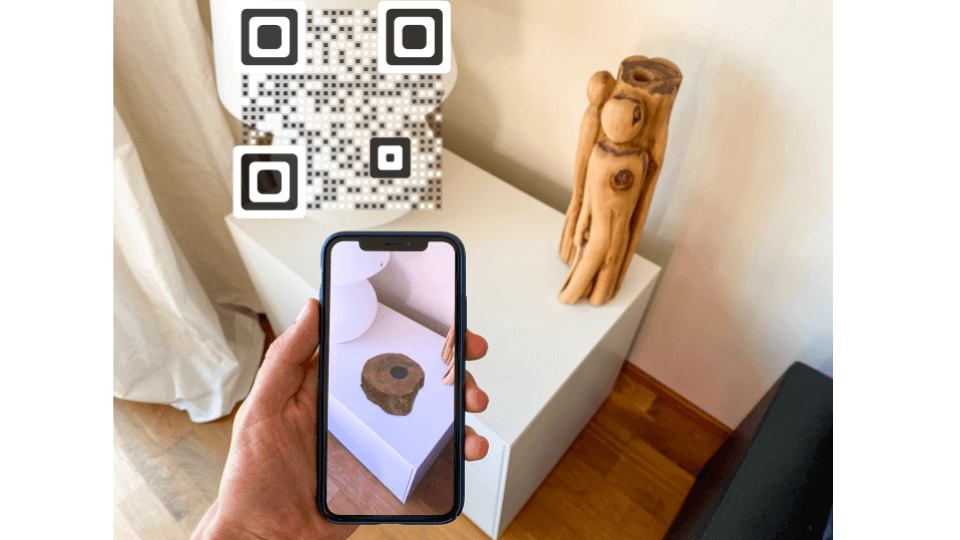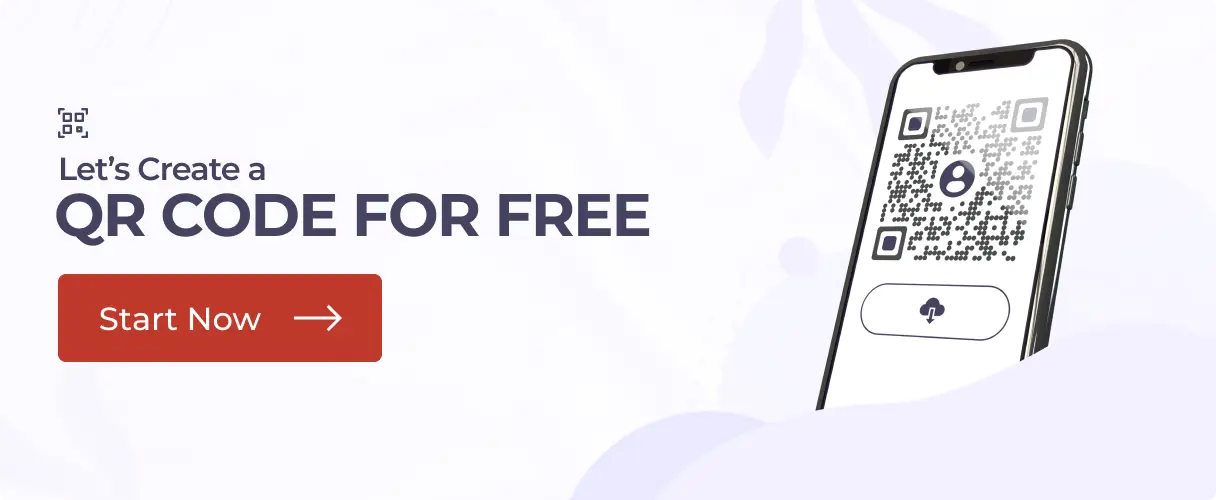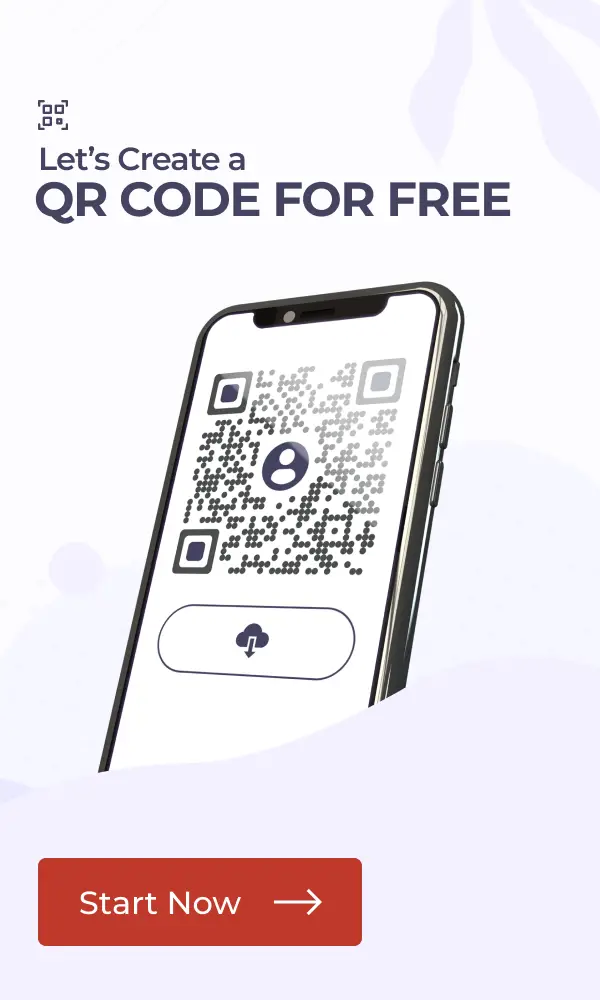In a nutshell: An augmented reality QR Code is a regular QR Code that leads users to AR experiences. It works by directing people to apps or websites where they can scan AR markers to see digital content in the real world. To create one, pick a QR Code generator, add your AR app or website link, customize it with your AR marker as a logo, and test it before sharing. They’re really awesome and people, especially Gen-Z, seem to like them a lot.
Ever wished your posters, brochures, or product packaging could do more than just look pretty?
Say you are a comic book publisher who wants to hook the readers to its content. You know that readers love their favorite comic characters. So you decide to make these fictional characters come to life to engage the readers better.
One of the easiest and most effective ways to make it happen is via Augmented Reality (AR).
Now, imagine scanning a simple QR Code and seeing a product model pop up in 3D, a character come to life, or a video overlay appear right on your screen.
That’s exactly what an augmented reality QR Code makes possible. It blends the real world with digital experiences.
If you’re a marketer, brand manager, teacher, or just someone curious about interactive tech, this guide is for you.
We’ll walk you through what an AR QR Code is, how it works, how to make one (even without coding), and show you real examples from brands that nailed it.
Let’s bring your print media to life, one scan at a time.
AR is an integration of real-time information, such as images, videos, and text, with real-world objects to make the user experience more interactive. In short, it is the overlap of digital information onto the physical world.
As per an estimate, the AR market will be worth between USD 70 billion and USD 75 billion by 2023.
Keep reading to know how QR Codes can help you make augmented reality even better for the end-users.
A. How do AR QR Codes work?

An AR QR Code bridges the gap between the physical and digital worlds. Here’s the simple process:
First, you create a QR Code that links to your AR app or website. When someone scans this QR Code, it takes them directly to your AR experience. No more searching through app stores or typing long URLs.
The magic happens when they reach your AR platform. That’s where they encounter AR markers. These are visual markers that your AR app recognizes. When the camera sees these markers, it knows exactly where to place the digital content.
For example, you scan a QR Code on a movie poster. It opens an AR app. You point your camera at the poster, and suddenly the movie characters jump out in 3D.
The QR Code acts as the gateway. The AR markers are the triggers for the actual augmented reality experience.
B. Understanding AR markers
AR markers are special visual patterns that AR apps use to place digital content. Think of them as invisible anchors in the real world.
These markers can be simple patterns, images, or even QR Codes themselves. Popular AR frameworks like AR.js use these markers to track where to show digital objects.
When your camera looks at a marker, the AR app calculates its position and orientation. Then it places the digital content exactly where it should be. This creates the illusion that digital objects exist in the real world.
You can even use your AR marker as the logo inside your QR Code. This way, users scan the same code to access your app and trigger the AR experience.
C. QR Codes vs. AR QR Codes
Regular QR Codes are simple. They store information like website links, contact details, or plain text. You scan them and get instant access to that information.
AR QR Codes take it further. They’re interactive QR Codes that lead to augmented reality experiences. Instead of just showing information, they transport users into immersive digital worlds.
Here’s the key difference: regular QR Codes give you information. AR QR Codes give you experiences.
A regular QR Code might show you a product’s specifications. An AR QR Code lets you see that product in 3D, rotate it, and even place it in your room virtually.
The technology behind both is the same. But the destination is completely different.
Let’s clear the confusion:
| Feature | Regular QR Code | Augmented Reality QR Code |
|---|---|---|
| Purpose | Link to content (website, PDF, etc.) | Launch AR experiences |
| Scan Result | Opens a URL | Opens AR content in real-time |
| Tech Needed | QR Code generator | QR Code + AR engine (like AR.js) |
| Use Case | Info sharing | Interactive experiences |
So while a normal QR Code just points somewhere, an AR QR Code makes things pop out in 3D.
D. How can QR Codes make augmented reality better?
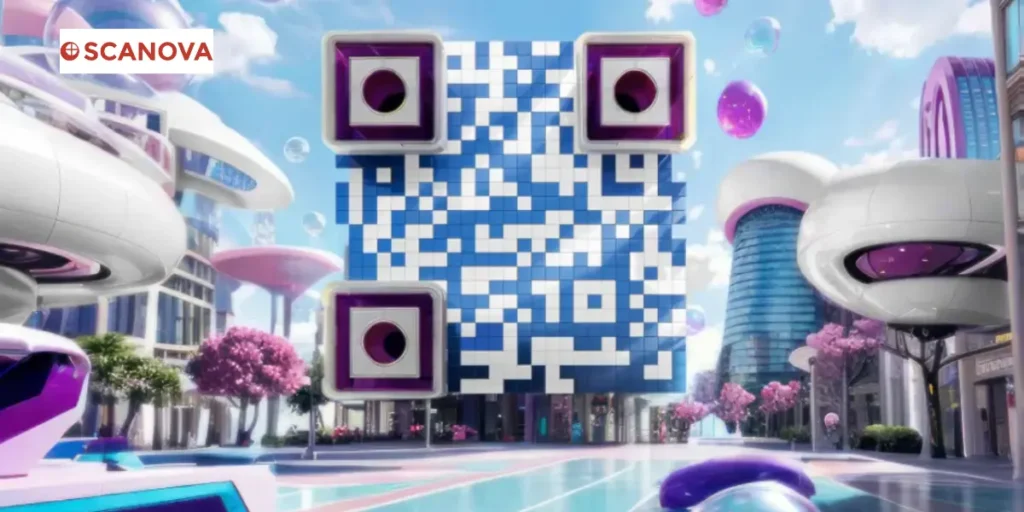
A QR Code helps make it easier for your target audience to download the required app or visit the website to be able to scan the AR marker. We call it an App Store QR Code and a Website URL QR Code, respectively.
All that they need to do is scan the QR Code and download the app/open the website URL. Once they do it, they can readily scan the AR marker. It’s that simple.
In fact, you can incorporate your AR marker into the same QR Code as a logo. This way, the end-users will have to scan the same QR Code to visit your website or download your app and see the content encoded in the marker.
E. Step-by-Step guide to creating AR QR Codes
Now that you know how QR Codes can make augmented reality better, the next question is, how to create one?
Step 1: Choose your AR Platform
First, decide where your AR experience will live. Will it be a mobile app or a web-based AR experience? This determines what type of QR code you’ll create.
Step 2: Find a QR Code generator
To create a QR Code, you will have to find a QR Code generator that allows you to create an App Store QR Code or Website URL QR Code with a logo.
Also, to be able to track the scanning activity, you’ll have to find the one that allows you to create dynamic QR Codes.
A simple Google search will give you pages of results. Comparing all the options to find the best one can be a time-consuming and tedious task.
Don’t worry. We have compiled a comparison chart of the best QR Code generators. You can go through it to find the best one.
Step 3: Create the interactive QR Code
Using Scanova for a demo, here’s how you can create a QR Code for augmented reality :
1. Go to Scanova and sign up for a 14-day free trial
2. From the QR Code categories, select the Website URL QR Code or App Store QR Code (depending on where you want the end-users to land)
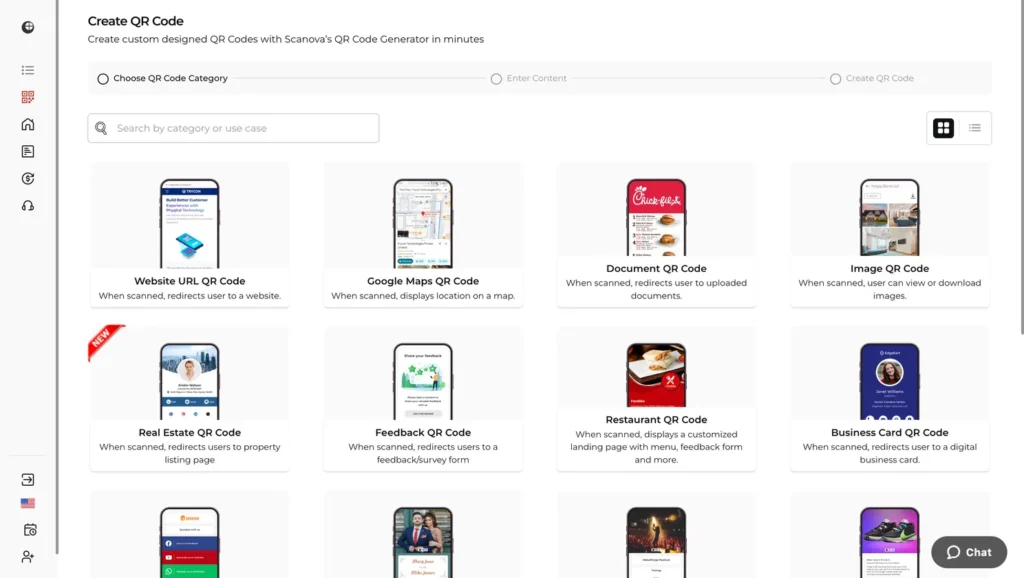
3. Now paste the website link (for Website URL QR Code) or relevant App Store links (for App Store QR Code)
4. Click Continue. On the page that loads, enter a name for your QR Code and click on Create QR Code
5. Next, you will see details such as QR Code name, type, and category. On the same page, you will see a preview of the QR Code on the right with the Edit Design option
6. Click Edit Design. You will see two design options to choose from – Custom Logo Design and Custom Background Design. Proceed with the Custom Logo Design option
7. Click on the Logo tab. Select the Add Image option to upload the image of the AR marker as the logo. Once you’ve uploaded the logo, you can go to the Eyes and Pattern tab to change the pattern and color of eyes and data modules
8. Once you’re done designing the QR Code, click Done Editing and then click Next
9. Now click Download. You’ll be prompted to specify the size and format of the image to be downloaded. Specify these details and click Export
That’s it. Your QR Code for augmented reality will be downloaded. It is always advisable to test scan the QR Code before putting it out for your target audience.
F. Benefits of using QR Codes
1. Customizable
QR Codes can be customized by adding colors and a logo to them. That means, besides adding the AR marker as the logo, you can customize the color and pattern of the QR Code’s eyes and data modules as per your wish.
It is a fact that custom-designed QR Codes attract 50-200% more scans than plain black-and-white ones.
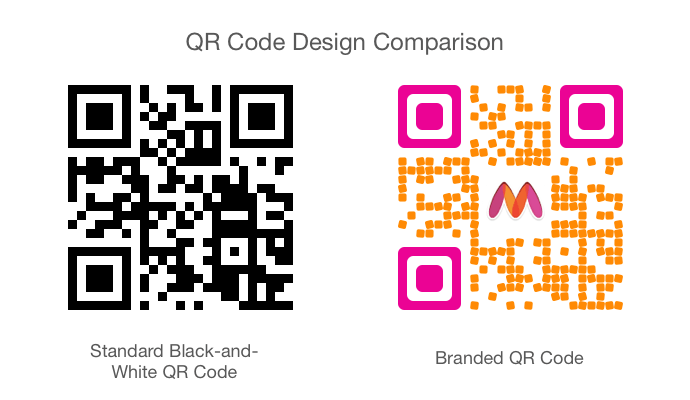
2. Trackable
QR Codes are trackable and can help you monitor their scanning activity. For example, how many people have scanned the QR Code, from where they’ve done it, and when they’ve done it.
You can even collect leads via QR Codes. That means you can get valuable insights about your target audience and optimize your future campaigns better.
3. Easily distributable
QR Codes are smaller in size than barcodes and can store much more information.
They can be easily scanned with a smartphone and can be readily shared via both print and digital media.
4. High-speed scannability
QR Codes have a high-speed scannability and come alive within seconds of holding your camera in front of them.
This makes the user experience faster and better.
5. Error correction
QR Codes have the feature of error correction. It ensures that even after being damaged, distorted, or dirty, they scan well.
G. Cost and pricing information for creating AR QR Codes
Creating AR QR Codes involves several cost components:
1. QR Code generation
Basic QR Code generators are free. But for business use, you’ll want premium features like analytics and customization. These typically cost $5-50 per month.
2. AR development
This is where costs vary widely. Simple AR experiences using platforms like AR.js can cost $500-2000. Complex custom AR apps can cost $10,000-50,000+.
3. Hosting and maintenance
Web-based AR experiences need hosting. Budget $10-100 per month, depending on traffic. App store listings are one-time costs of $25-99.
4. Design and content creation
Professional 3D models and animations cost $500-5000+, depending on complexity. Simple experiences with basic 3D objects are much cheaper.
5. Total budget estimate
For a simple AR QR Code campaign: $1000-5000
For a comprehensive campaign with custom app: $15,000-75,000+
The good news? You can start small and scale up as you see results.
H. 11 Awesome real-life campaigns where brands used Augmented Reality QR Codes
Here are some striking real life use cases of QR Codes in augmented reality:
1. IKEA Place App
IKEA revolutionized furniture shopping with AR QR Codes. Customers scan interactive QR Codes in catalogs to see how furniture looks in their homes.
The AR experience shows exact sizes and colors.
2. Snapchat Lens Campaigns
Brands use QR Codes to launch custom Snapchat lenses. Users scan the code and instantly access branded AR filters.
It’s marketing that people actually want to engage with.
3. Art museum
You know that art in itself is very intriguing. But it’s often not possible to let the visitors touch and experience all the artifacts due to their fragility.
AR can easily help solve this problem. You can put a QR Code for augmented reality beside each sculpture or painting.
When scanned, it can bring up a 3D model of the artifact, helping the onlooker derive an interactive and unique experience.
4. Education
Education can be fun, and QR Codes with AR markers are up for the job. They can especially be helpful in explaining the concepts or diagrams that need visualization for a better understanding.
For example, the organ system in biology. You can put up an AR-based QR code beside the text or diagram to help students see a 3D interactive version of the same.
5. Comic books
Remember reading comics and fantasizing about your favorite characters and superheroes? Let’s admit that we’ve often even imagined meeting them to save the world.
If not saving the world, you can use AR to help your readers see their favorite characters come to life in a couple of seconds.
6. Real estate
QR Codes with AR markers can help the real estate industry take the buying experience to a whole new level.
It can be especially helpful for long-distance buyers who can’t visit the site physically.
With the projection of the property over the smartphone, you can engage buyers better.
7. Traveling
Travelers often feel confused about directions in new cities. To help them, city admins can use AR at bus stops and metro stations.
It will help the travelers to see a 3D model of the city with all the routes and directions. It will be both fun and helpful for tourists and residents alike.
8. Better customer experience (Puma)
AR can level up the customer experience via interactives. It helps build up their interest by engaging them in a personalized way.
Puma’s Manhattan store has done it already. They used AR-based QR Codes that featured Puma’s mascot on being scanned.
It provided customers with directions to the basketball section and allowed them to take selfies with it. They also used it on shoe tags and engaged in a unique AR experience.
9. Pepsi Max – “Unbelievable” Campaign
They placed AR QR Codes on bus stops. Scanning them launched wild, fun scenes like UFOs landing or tigers walking across the street.
10. Lego AR Playgrounds
Lego printed interactive QR Codes on boxes. Kids could scan them to see the models “build themselves” in 3D before buying.
11. BMW Print Ads
BMW used AR QR Codes in magazines. When scanned, the car popped up in 3D right on your desk. You could rotate and explore it.
These campaigns didn’t just attract eyeballs; they kept people engaged.
I. FAQs: QR Codes in Augmented Reality
1. What’s the difference between a regular QR Code and an augmented reality QR Code?
A regular QR Code just stores information like website links or text. An AR QR Code leads to augmented reality experiences where you can see digital content overlaid on the real world.
2. Do I need special software to create AR QR Codes?
No. You can use any QR Code generator like Scanova to create the QR Code part. The AR experience is created separately using AR development tools or platforms.
3. Can I use AR QR Codes without an app?
Yes. Web-based AR experiences work directly in mobile browsers. Users don’t need to download anything extra.
4. How much does it cost to create an AR QR Code?
Here’s a basic cost breakdown:
- QR Code Generator: Free to $10/month (Scanova offers customization, dynamic codes, etc.)
- AR Tools (like AR.js): Free and open source
- Hosting: $2 to $10/month if using your own domain
- 3D Models/Animations: Free (stock) or $20–$100+ if hiring designers
So yes, you can totally build an AR QR Code campaign on a small budget.
5. What devices support AR QR Codes?
Most modern smartphones support AR experiences. Both iOS and Android devices can handle web-based AR and dedicated AR apps.
6. How do I track the performance of my AR QR Codes?
Use dynamic QR Codes that provide analytics. You can track scans, locations, times, and user engagement with your AR content.
7. Can I update my AR QR Code after creating it?
Yes, if you use dynamic QR Codes. You can change the destination URL without reprinting the QR Code. The AR content can also be updated on your platform.
8. What devices support AR QR Codes?
Any smartphone or tablet with a camera and a browser. No app needed if you use AR.js or WebAR.
9. What’s a marker in AR?
It’s an image or symbol that the AR system recognizes to trigger a 3D effect. Think of it like a launchpad.
10. Can I update the AR content later?
Yes! Just link your QR Code to a dynamic URL. When you change the hosted content, the QR Code stays the same.
11. Is coding required for creating QR Codes or an AR campaign?
Not always. Many tools like ZapWorks, 8thWall, and even AR.js templates make it no-code or low-code.
Conclusion
Augmented reality QR Codes are changing how we interact with the world around us. They bridge the gap between physical and digital experiences in ways we never imagined.
The technology is here. The tools are accessible. And the audience is ready.
Whether you’re a marketer looking to engage customers, an educator wanting to make learning interactive, or a business owner exploring new ways to showcase products, AR QR Codes offer endless possibilities.
Start small. Test with simple experiences. Learn what works for your audience. Then scale up as you see results.
The future of interactive experiences is literally in your hands. All it takes is a simple scan to unlock worlds of possibility.
That is all you need to know about how a QR Code can be used in augmented reality. You can now go ahead and create your very own AR-based QR Codes and make the journey even better for your audience.
